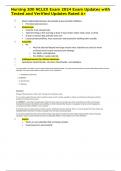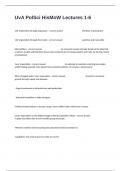Samenvatting
Summary Organisation & Management book, ISBN: 9789001850227, Tourism Business
Samengevatte pagina's: 20, 21, 119-126, 229-234, 242-252, 264, 265, 285 - 292, 294-318, 416-428, 463-495, 395-413, 444-448, 529-535. Deze pagina's waren verplicht voor Tourism Business in collegejaar op NHTV / BUas.
[Meer zien]














